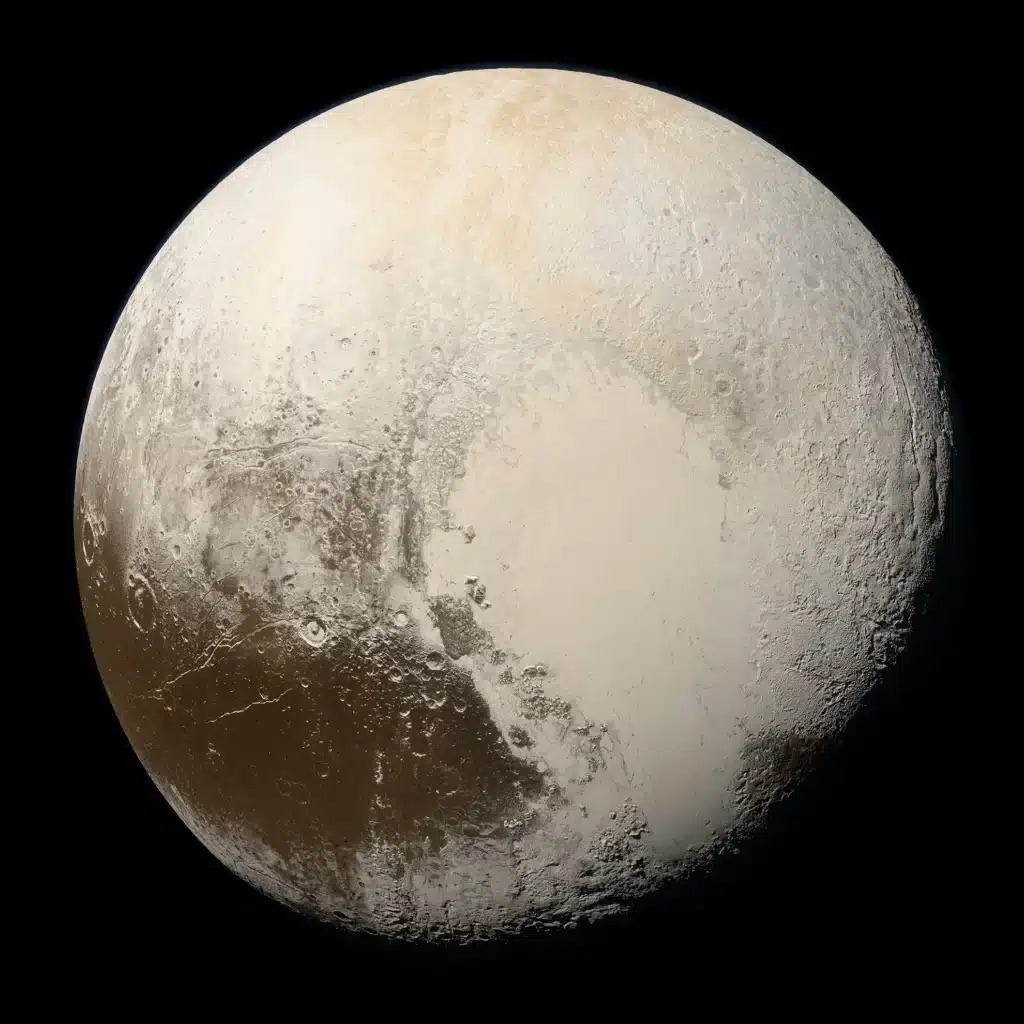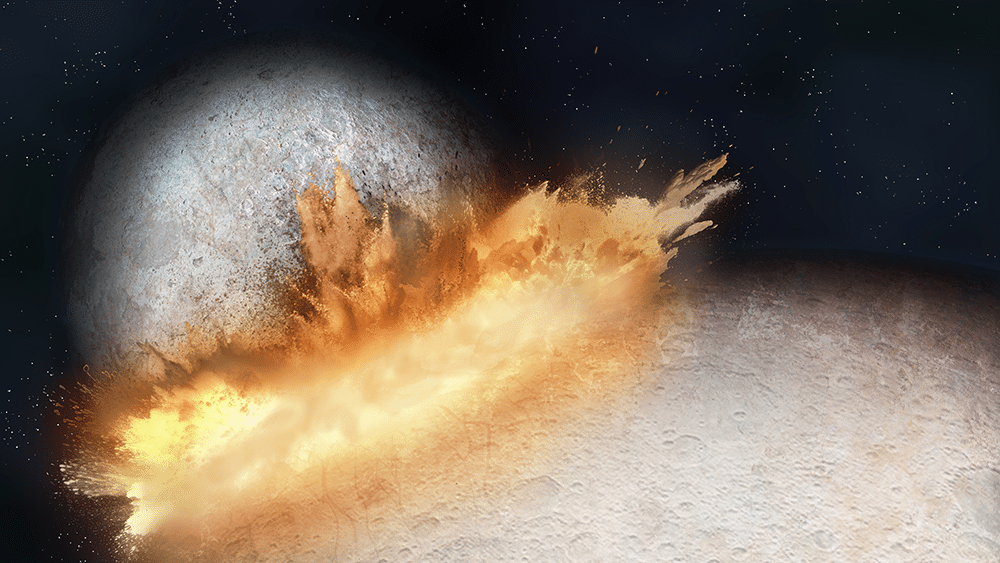When NASA’s New Horizons spacecraft whizzed by Pluto in 2015, it revealed a world far more complex and dynamic than anyone had imagined. Among the many surprises was a massive, heart-shaped feature on Pluto’s surface, now known as Sputnik Planitia. This vast basin, about the size of Texas, quickly became a focal point for scientists trying to unravel the mysteries of Pluto’s past.
The origin of Sputnik Planitia has been a puzzle since its discovery. Its location near Pluto’s equator and its alignment with Pluto’s largest moon, Charon, suggested that something massive must be lurking beneath the surface, anchoring the basin in place. Some researchers proposed that a subsurface ocean of liquid water, capped by a thick layer of ice, could provide the necessary heft. But a new study by a team of researchers from the University of Bern and the University of Arizona offers a different explanation – one that doesn’t require an ocean at all.
So what could have created such a massive, distinctive heart-shaped feature on Pluto? The researchers, led by Harry Ballantyne of the University of Bern, turned to sophisticated computer simulations to test out different scenarios. They used a technique called smoothed-particle hydrodynamics, which allows them to model the complex physics of large-scale impacts in three dimensions. Essentially, they can create a virtual Pluto in their computer, smash it with a giant space rock, and see what happens.

The team ran dozens of simulations, varying the size, speed, and angle of the impacting object, as well as the internal structure and composition of Pluto. They discovered that a specific set of conditions could create a basin very similar to Sputnik Planitia, without the need for a subsurface ocean.
Here’s what they propose: Around 4 billion years ago, when Pluto was still young, a massive object slammed into it at an angle of about 30 degrees. This object, about 730 kilometers across (roughly half the size of Pluto itself), was a differentiated body, meaning it had a rocky core surrounded by an icy mantle, similar to Pluto’s own internal structure.
As this giant impactor plowed into Pluto, it shattered and deformed, its icy mantle spreading out and filling the newly formed crater. But its dense, rocky core stayed largely intact, penetrating through Pluto’s icy crust before coming to rest near Pluto’s core. This buried chunk of rock, the researchers suggest, is the secret to Sputnik Planitia’s puzzling alignment.

You can think of it like dropping a pebble into a glass of water. The pebble sinks straight to the bottom, while the splash it creates spreads out on the surface. In the case of the Sputnik Planitia impact, the “pebble” is the impactor’s rocky core, and the “splash” is the icy material that filled the basin.
Over time, Pluto’s surface and interior would have adjusted to the presence of this new mass. The extra weight of the rocky core would have pulled Sputnik Planitia towards Pluto’s equator, explaining its present-day location. Meanwhile, the icy material filling the basin, being slightly denser than Pluto’s own ice, would have sunk downward, creating the depression we see today.
This hypothesis neatly explains several key features of Sputnik Planitia without invoking an ocean. It accounts for the basin’s shape, depth, and location, as well as the apparent presence of a positive gravity anomaly – the “extra mass” that prior studies attributed to a subsurface ocean.
Of course, this is still just a hypothesis based on computer models. To confirm it, we’d need more detailed observations of Pluto’s gravity field and interior structure. But it offers a compelling alternative to the ocean theory, and showcases the power of combining observational evidence with theoretical simulations. The full research paper is published in Nature Astronomy.
This study also underscores just how much we still have to learn about the worlds in our own cosmic backyard. Pluto, once considered a simple, inert iceball, has proven to be a dynamic and complex world with a storied past. As we continue to explore the outer solar system, we’re sure to uncover more surprises that will reshape our understanding of planetary evolution and geology.
So the next time you look up at the night sky, give a nod to Pluto and the cosmic detectives working to unravel its mysteries. The story of Sputnik Planitia reminds us that even on the frigid fringes of our solar system, there are tales of cataclysm and transformation waiting to be told.











